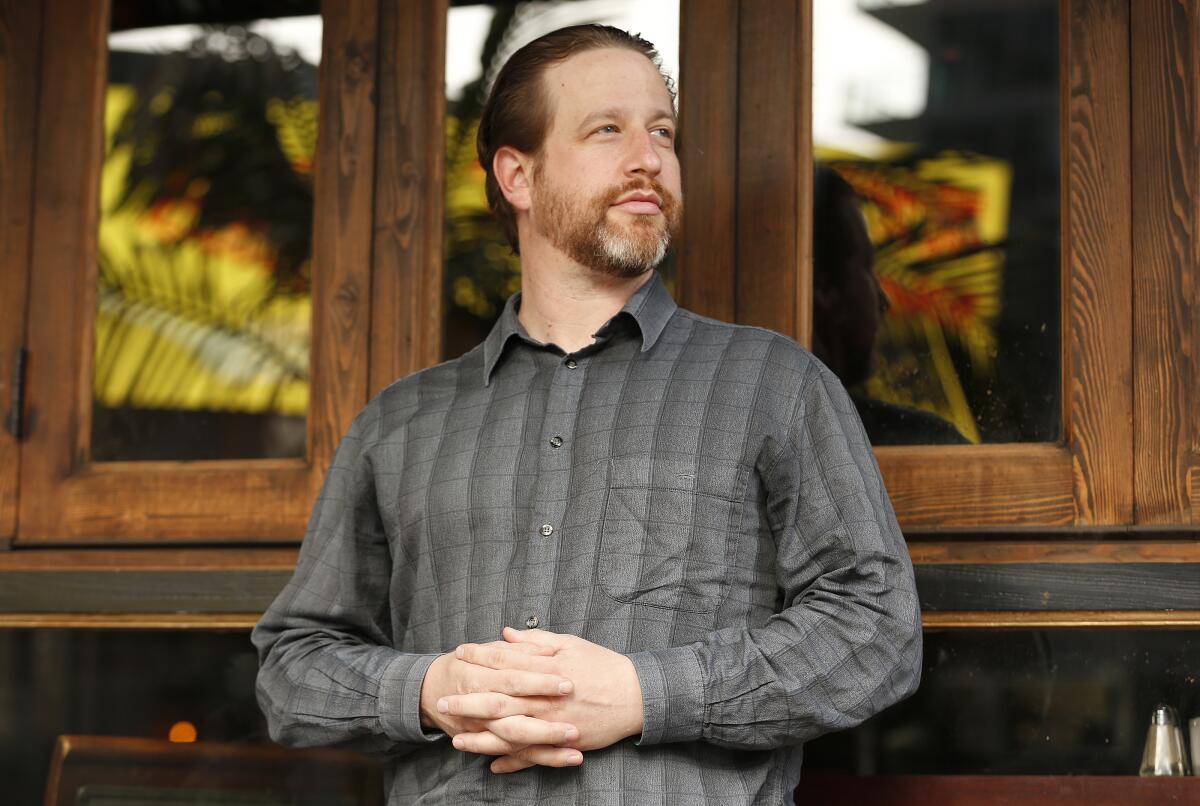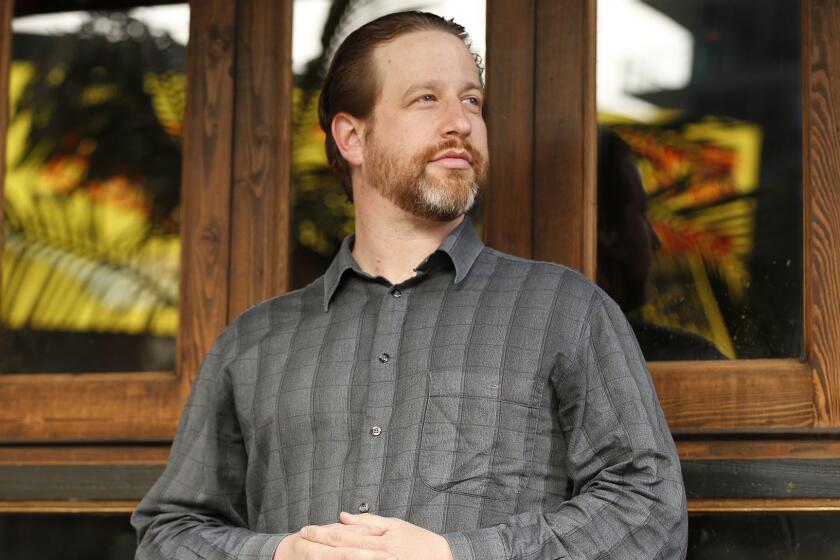Should California have a $18 minimum wage? Voters may get to decide

- Share via
California voters could get to decide whether the state minimum wage goes up to $18 an hour, at a time when rising prices and living costs are eating into workers’ household incomes.
Joe Sanberg, a Los Angeles investor and anti-poverty activist, spearheaded the Living Wage Act of 2022, which was filed with the state attorney general’s office Friday. Sanberg said he will finance the signature-gathering process to qualify the ballot initiative for the November election. It would gradually increase the state minimum wage starting in 2023, then rise to $18 an hour for all-sized businesses by 2026.
The current minimum wage is due to reach $15 an hour for large businesses starting in January, and for all businesses by 2023. The state minimum is now $14 an hour for businesses with 26 or more employees and $13 an hour for smaller businesses.
“If you work full time, you should be able to live with full financial security, and that’s not the case in California,” Sanberg said in an interview. “We were a leader in pushing for a $15 minimum wage, but now we have to move the ball forward and farther. It’s overdue for $18.”
He said the time is right to push for a higher minimum wage because the pandemic highlighted how many Californians working full-time jobs still cannot afford basic needs.
Sanberg made his fortune on Wall Street and then shifted to investing in start-ups, including meal-prep company Blue Apron.
He is well-known in Sacramento, having cajoled legislators beginning in 2015 to create a California version of the earned income tax credit — a program that has been expanded in recent years to help more low-income residents. He founded a nonprofit to launch an advertising campaign to make sure eligible people got their money.
He’s also a co-founder of Aspiration, an online banking service that allows customers to choose their own fees.
Although it’s rare for wealthy Californians to personally bankroll all costs involved in an initiative signature campaign, it has happened occasionally through the years.
And under state election law, Sanberg could stop there — choosing to withdraw his proposal once it qualifies for the ballot if lawmakers and Gov. Gavin Newsom agree next year to pass a similar law on their own.
The initiative would mandate that base pay at businesses with 26 or more employees go up a dollar each year until it reaches $18 an hour in 2025. Smaller businesses with 25 or fewer employees will have an extra year to reach the $18 minimum.
After reaching $18 an hour, the minimum wage will be adjusted yearly to keep pace with the cost of living, according to the initiative.
Joe Sanberg was a bit flummoxed.
California’s current gradual rise to $15 an hour was the result of a bill signed in 2016 by then-California Gov. Jerry Brown. The law, which went into effect in 2017, raised the minimum wage steadily each year to reach $15 an hour. In 2016, the minimum wage for all businesses was $10.
The rise to a $15 hourly wage has had a “real, measurable effect on workers’ pay in the state,” said Ken Jacobs, chair of the UC Berkeley Labor Center. The center has estimated that 5.6 million Californians would receive a wage increase because of the move to $15 an hour, with an average annual earnings increase per person of $3,700.
By the time the minimum wage reaches $15 an hour, it will equal a total of more than $20 billion a year in wage increases, which is more than the combined value of all the state’s major public assistance programs, Jacobs said.
Still, “it was still an important increase but ... costs have continued to rise,” he said. “It’s also important to note that, especially with rising housing costs in California, that in our major cities, $15 is still not enough.”
Advocacy group United Ways of California calculated that a family of four — two adults, one preschooler and one school-aged child — living in Los Angeles County would need to make an annual income of $95,112 to meet basic needs. That calculation, known as the Real Cost Measure, is based on publicly available data on expenses such as housing, food, healthcare and child care.
California’s high cost of living is a main reason why Sanberg and others are advocating for an $18 an hour minimum wage.
The minimum wage should now be $24, if it increased in line with the growth in worker productivity since 1960, Sanberg said.
The fact that the state base pay is one year away from $15 an hour “doesn’t mean it’s the right minimum wage,” he said. “The job will be done when everyone who works full time can afford life’s basic needs.”
Times staff writer John Myers contributed to this report.
More to Read
Inside the business of entertainment
The Wide Shot brings you news, analysis and insights on everything from streaming wars to production — and what it all means for the future.
You may occasionally receive promotional content from the Los Angeles Times.












